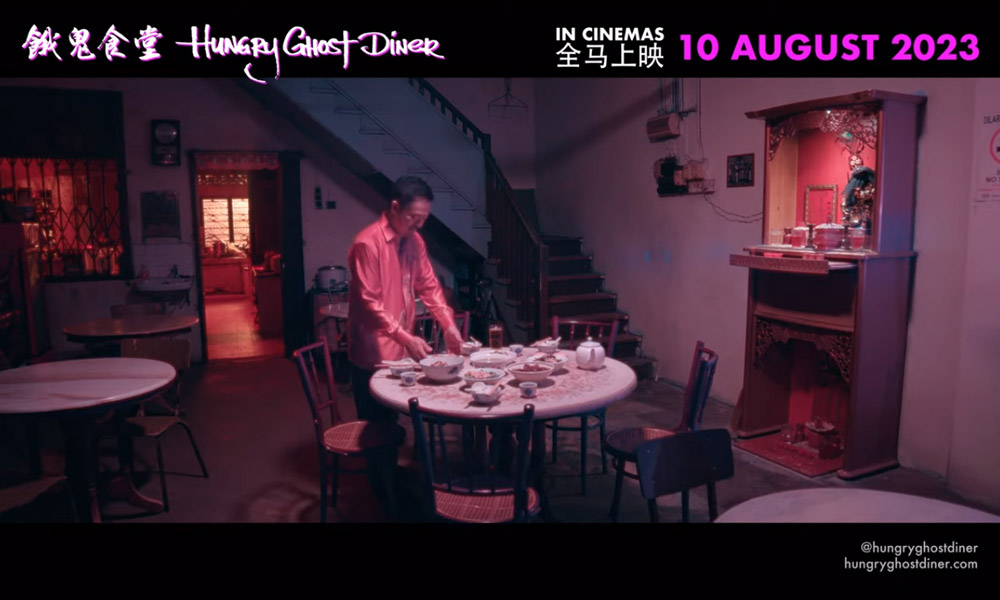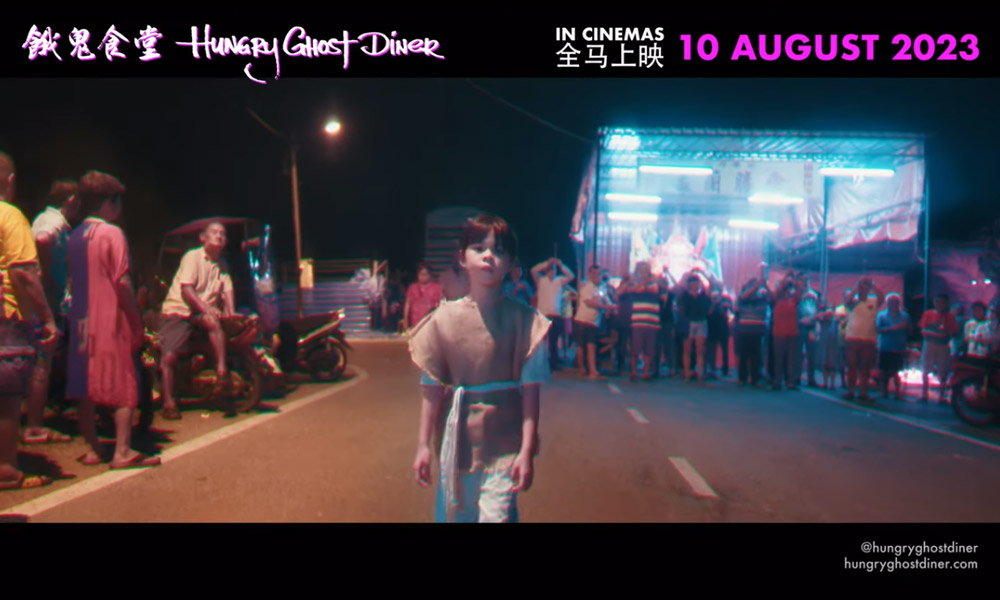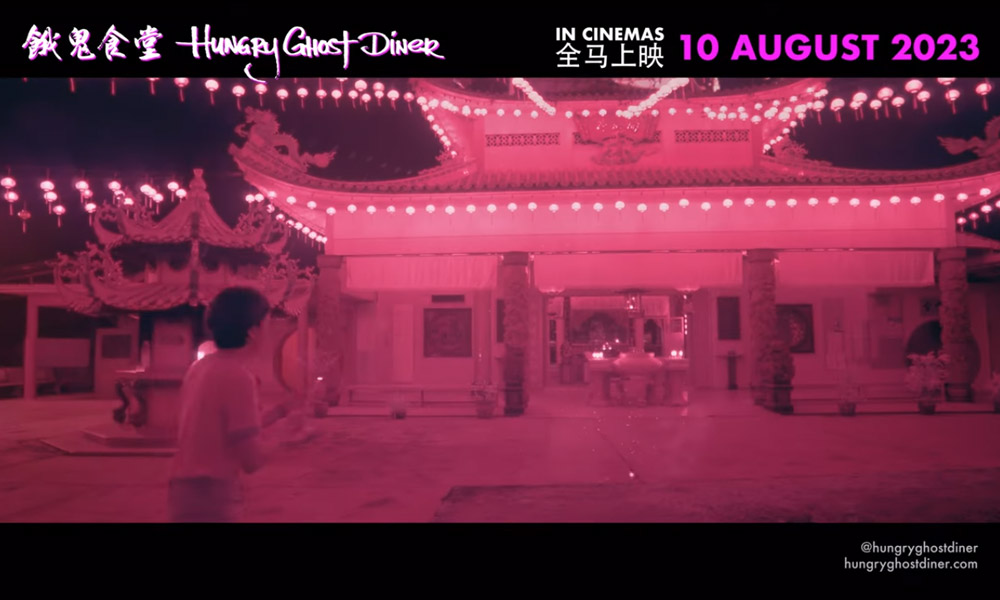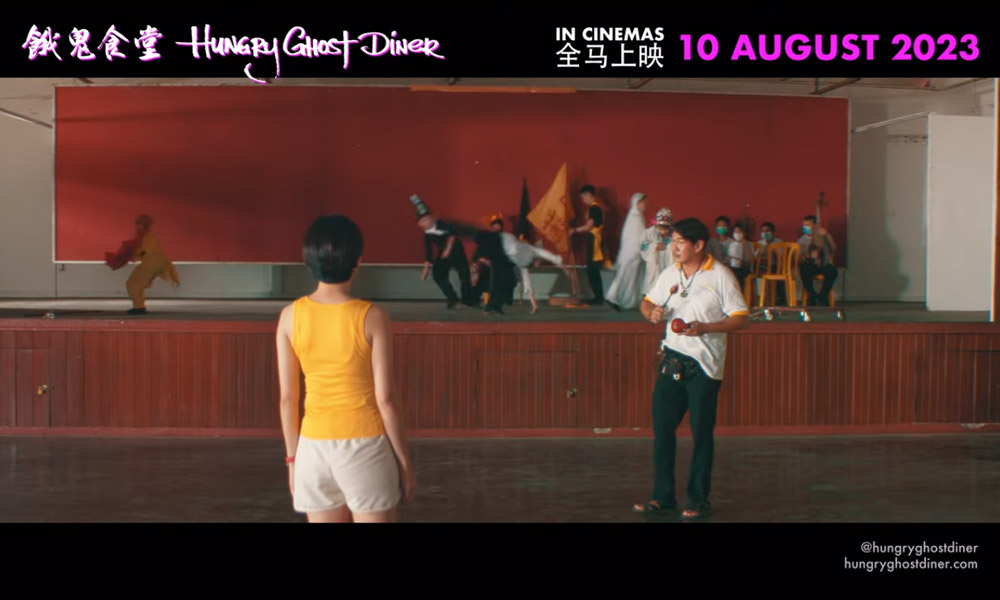The most crucial thing to say about Hungry Ghost Diner is that it is worth watching!
Whatever its few imperfections may or may not be, there is little doubt that it is a substantial addition to the canon of Malaysian cinema.
This spoiler-free review will cover some of the movie's highlights surrounding its themes, the unique things about Malaysia that it showcases, and its artistic commitment to authenticity.
Hungry Ghost Diner explores a small town family from Behrang, Perak and their experiences with death and estrangement.
As the title suggests, the Hungry Ghost Festival features strongly in the movie.
Adherents of Taoism and Buddhism often observe Hungry Ghost Month, where it is believed that the spirits of the dead are let out of the realm of the dead and allowed to roam the world of the living.
It is a time when many offerings are made to the spirits of the dead, especially in the form of food.

Returning home
Bonnie/Ahmoi lives in Kuala Lumpur and is a young operator of a food truck (named the eponymous ‘Hungry Ghost Diner’) who lost her mother when she was a young girl living in Behrang.
Her father stayed back in Behrang with her maternal uncle to manage the family coffee shop, selling Hakka mee.
The movie, which features primarily Cantonese and Hakka dialogue, is set near the height of the Covid-19 pandemic, when events compel Bonnie to return home to Behrang to finally face family baggage that she has long been running away from.
The film’s treatment of intergenerational family dynamics and relationships that have experienced various low-burning strains over the years is perhaps one of the movie's most genuine, heartfelt aspects.
The film dives deep into questions of how we deal with loss and the idea of how feelings of business left unfinished by both the living and the dead can continue to haunt us.
This melancholy is captured in a lovely song midway through the movie, The One In My Dreams.
We feel the pain of the main characters as they attempt to reach out over the chasms of pain that come from letting things drift unconfronted for too long.

Stellar performance
A lot of this comes across through some star performances by the cast.
I felt singer Chen Keat Yoke’s performance as the film’s protagonist was one of the film's highlights. Her very natural acting immersed me entirely in the story every time she was on screen.
Fabian Loo’s performance as Kit and Rabbit Chen’s as Yap Sifu was also highly entertaining and brought all kinds of smiles and laughter to the audience.
Hard to say which was more engaging - Keat Yoke’s singing, Fabian’s dancing, or Rabbit’s smile and recitation.
The film also felt like a love letter to small-town Malaysia and bits and pieces of our culture that seem to be at risk of fading away.
The two-street town of Behrang Station features heavily, in a nostalgic, reflective way.
The posters on the coffee shop wall bring back memories familiar to almost any Malaysian more than a few decades old - instantly transporting us to what feels like a different time now. One that predates our many airconditioned malls and skyscrapers.

Cultural elements
The scenes with food are treated as tenderly as we watch noodles made from scratch and pau’s taken out of the steamer. Like much else in the movie, it felt natural.
And then of course there are the great many cultural elements that surround events like the Hungry Ghost Festival.
Traditional Teochew/Hokkien Chinese Puppet Opera features heavily, putting on screen the type of entertainment that used to prosper up and down the country a few generations ago.
While almost completely gone as a form of popular entertainment, the themes in the tales these operas used to tell still reverberate, and it’s nice to have a film like this to remind us and immortalise art like this.
Small-town life is not all that’s examined. The challenges of city life and trying to climb up the slippery economic ladder are also treated with authenticity and humour.
The film is generally entertaining and clearly a labour of love on the part of all its creators, especially for writer/director Cho We Jun.

One of celebration
The movie is also beautifully shot by renowned Malaysian cinematographer Tan Teck Zee (who a lifetime ago, may have actually briefly filmed me before - a thrill to look back on).
The innovative and brave production house that made the movie, Kinovisuals, also gave us a nice little sneak peek at the positive vibes that permeated the film through a rather well-made Behind the Scenes series.
For me, perhaps a little tweaking to the narrative flow and structure of the movie could have helped more clearly focus some of the emotional energy in terms of when to hit which notes.
On the whole though, I felt like the vibe running like an undercurrent throughout the movie was one of celebration.
We are celebrating little corners of Malaysia, celebrating precious nuggets of fading culture, and celebrating the importance of family and the ever-present opportunity for reconciliation.
The movie tries to remind us that in dealing with the abundance of pain, loneliness and estrangement, it is better - as a character says - to light a candle than to curse the darkness.
The movie’s entire spirit is pretty well encapsulated in its closing credit song, sung by Keat Yoke herself, I Must Be Me - check it all out! - Mkini
NATHANIEL TAN is a strategic communications consultant who works with Projek #BangsaMalaysia. He can be reached at nat@engage.my.
The views expressed here are those of the author/contributor and do not necessarily represent the views of MMKtT.




No comments:
Post a Comment
Note: Only a member of this blog may post a comment.